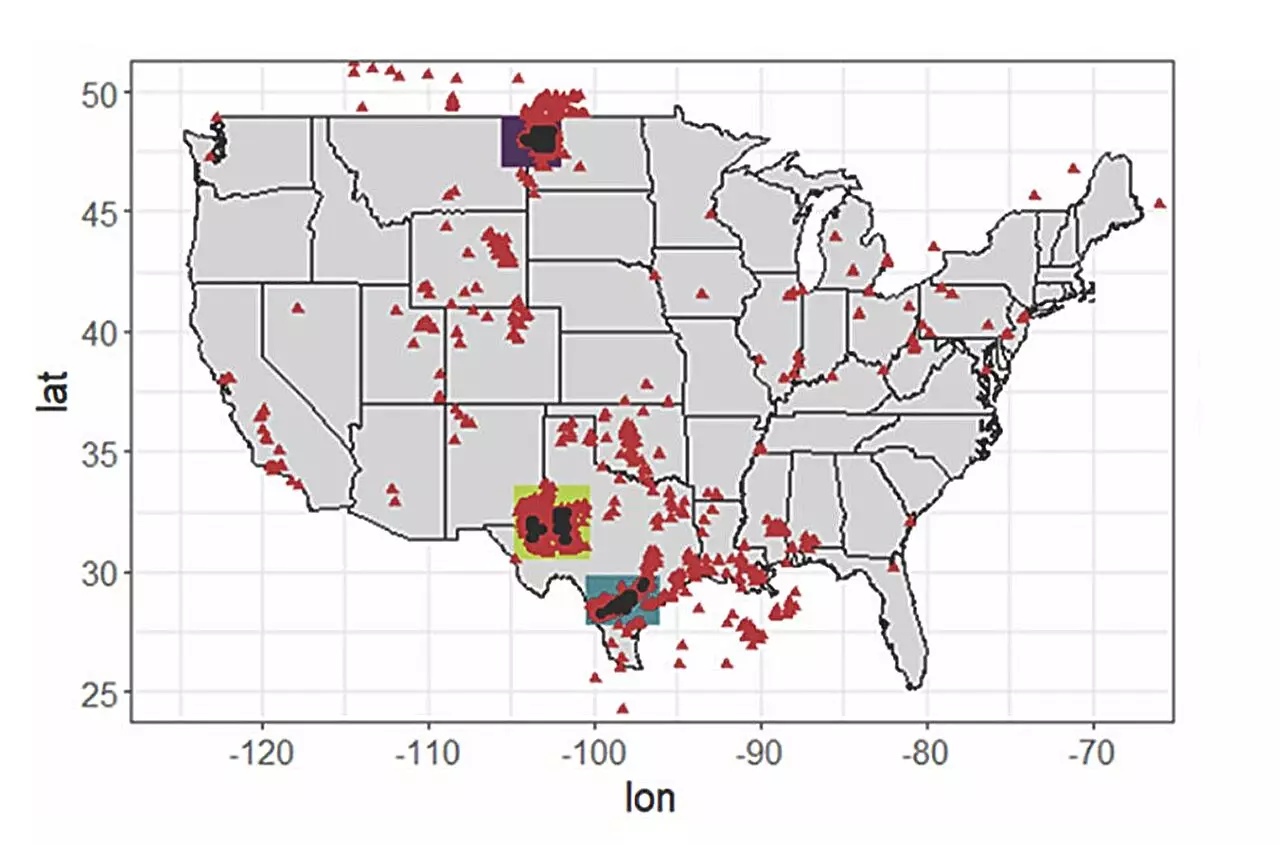Natural gas flaring, a common practice in the United States, is used to dispose of the gas byproduct from oil extraction. While it can reduce the safety concerns of the natural gas on site, it also produces nitrogen oxides (NOx) that directly and indirectly impact air quality. The Clean Air Act requires the U.S. Environmental Protection Agency (EPA) to regulate nitrogen dioxide (NO2) due to its influence on public health and the environment. However, the current method of gauging NOx emissions from flares using static emission factors may not accurately reflect the true impact. In an effort to provide more accurate estimates, a University of Michigan-led research team conducted a study on NOx production from real-world natural gas flares. The results of their research are published in Environmental Science and Technology.
Research Methodology
To measure NOx production from natural gas flares, the research team collected data from three major gas-producing regions in the United States: Eagle Ford in Texas, Permian in Texas and New Mexico, and Bakken in North Dakota. These regions account for over 80% of gas volumes flared in the U.S. The team used a small aircraft equipped with high precision instruments to fly close to the ground and intercept the mixed combustion plume from the flares. They estimated NOx flaring emissions for each region using observationally-derived emission factors from 480 airborne intercepts, along with region-based estimates of flaring gas volumes.
Findings and Implications
The research revealed that while the median emission factor for each region fell within the range used by the regulatory agency in Texas, some flares emitted NOx at significantly higher rates. Approximately 20-30% of the flares were responsible for 80% of the basin-wide flaring NOx emissions. This means that a small number of high-emission flares contribute disproportionately to overall NOx emissions, especially in the Bakken and Permian regions. The emissions factors for these high-emission flares were two to three times larger than the values used by the EPA.
The implications of these findings are significant. The excessive amounts of NOx emitted by certain flares have a greater air quality impact than previously understood. This reduced air quality could potentially harm the health of workers onsite and the estimated 17.6 million Americans living within a mile of active oil and gas wells. The study also affirms that reducing the volume of gas flared would have greater climate and air quality benefits than previously realized, building upon previous research on methane emissions from flares conducted as part of the F3UEL project.
The practice of natural gas flaring in the United States has significant environmental consequences, particularly regarding air quality. The research conducted by the University of Michigan-led team sheds light on the true extent of NOx emissions from flares. By directly measuring NOx production from real-world flares, the study highlights the importance of assessing emission sources under real-world operating conditions. These findings support the need for better regulation and monitoring of flaring operations to mitigate their impact on public health and the environment. Furthermore, reducing the volume of gas flared would not only reduce safety concerns but also have greater climate and air quality benefits than previously recognized. It is crucial that policymakers, regulatory agencies, and industry stakeholders prioritize efforts to minimize natural gas flaring and its associated environmental consequences.


Leave a Reply